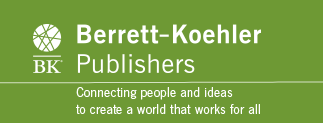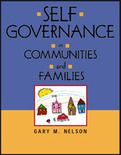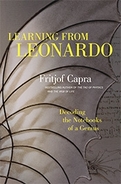2007
Show Me the Money provides a comprehensive system that enables business leaders, analysts, and consultants to make the case for their projects and get buy-in at the beginning, refine them during development, and communicate the ultimate results to all stakeholders once the projects are completed. Easy to read and fortified with case studies, checklists, tips, and tools, Show Me the Money clarifies and resolves the mystery surrounding the allocation of monetary values.
- Offers a comprehensive, proven method for measuring and evaluating the ROI of every aspect of any organizational initiative
- Shows how to make the business case for new projects at every stage of their development--before, during, and after implementation
- Includes case studies, checklists, tools, and tips to help implement this method
Once you know the truth, you'll want to adopt Edesess's Ten New Commandments for Smart Investing, simple rules you can follow to invest, get a profitable return, and avoid squandering any more of your hard-earned dollars on bogus expertise.
2007
- Reveals the severe--and surprising--limits on free speech in the American workplace
- Includes vivid examples illustrating just how restricted workplace speech has become
- Suggests ways to expand employee rights while protecting employers' legitimate concerns
- Learn more at www.SpeechlessTheBook.com
We are entering the 21st century in a period of great uncertainty and change. People are wary of government and have lost confidence in social institutions-from social welfare and schools to healthcare programs. That loss of confidence has undermined the community and family life that is the very foundation of our society. Self-Governance in Communities and Families shows how individuals can reconnect to and revitalize their social institutions so that they are effective in serving the needs of all.
Gary Nelson identifies the existing social models we are moving away from and explores the new, emerging pattern of relationships we are shifting to in our social institutions. He reveals why open dialogue and partnerships between people and their social institutions are essential to the well-being of families and thriving communities. He describes why social regeneration is best pursued through these partnerships, with people and stakeholders within communities taking positive action to develop and protect the well-being of their families and the health of their communities.
Applying both business and social science concepts to the day-to-day management of social institutions, Nelson offers a proven, practical method-community self-governance dialogues-for engaging people in the redesign and revitalization of social institutions. The author shows how-by creating opportunities for individuals and families to proactively participate in developing a strategic plan for how their institutions are managed, run, and evaluated-this dialogue method ultimately empowers people to take control of their own lives. He also reveals how active participation in these open dialogues ignites creative ideas and new energy for the redirection and reshaping of those institutions.
With numerous examples and anecdotes, Nelson illustrates the values, beliefs, and principles that underlie how we learn and make decisions in a self-governing democratic culture. He provides tips for shared learning and accountability, ownership and governance, and the creation of a culture of self-governance. And he offers advice on how to maintain an ongoing engagement and partnership between the public and its social institutions.
Communities and families can be strengthened when each of us takes responsibility for ourselves and works in partnership with others to restore our social institutions. Self-Governance in Communities and Families sets forth clear, doable strategies for fostering both responsibility and ownership through dialogue and collaboration between public and private sectors.
- Provides community leaders and others with a framework for bringing all parts of a community and the "system" together around the common purpose of strengthening communities and families
- Outlines a philosophy of self-governance and empowerment for at-risk families, individuals, and neighborhood communities
- Offers managers a dynamic, adaptive model for opening up, supporting, and steering the process of social change
Zack politely examines and then smashes to tiny fragments the “dusty old rules” of standard networking advice. She shows how the very traits that make many people hate networking can be harnessed to forge an approach more effective and user-friendly than traditional techniques. This edition adds new material on applying networking principles in personal situations, handling interview questions, following up—what do you do with all those business cards?—and more.
Networking enables you to accomplish the goals that are most important to you. But you can't adopt a style that goes against who you are—and you don't have to. As Zack writes, “You do not succeed by denying your natural temperament; you succeed by working with your strengths.”
Obviously, we can't all be geniuses on the scale of Leonardo da Vinci. But by exploring the mind of the preeminent Renaissance genius, we can gain profound insights into how best to address the challenges of the 21st century.
- By the bestselling author of The Tao of Physics and The Web of Life
- Reveals Leonardo da Vinci's surprisingly modern approach to scientific inquiry and the amazing discoveries that resulted
- Identifies seven characteristics of Leonardo's genius that we can all learn from
Leonardo da Vinci was a brilliant artist, scientist, engineer, mathematician, architect, inventor, writer, and even musician-the archetypal Renaissance man. But he was also, Fritjof Capra argues, a profoundly modern man.
Not only did Leonardo invent the empirical scientific method over a century before Galileo and Francis Bacon, but Capra's decade-long study of Leonardo's fabled notebooks reveal him as a systems thinker centuries before the term was coined. He believed the key to truly understanding the world was in perceiving the connections between phenomena and the larger patterns formed by those relationships. This is precisely the kind of holistic approach the complex problems we face today demand.
Capra describes seven defining characteristics of Leonardo da Vinci's genius and includes a list of over forty discoveries Leonardo made that weren't rediscovered until centuries later. Leonardo pioneered entire fields-fluid dynamics, theoretical botany, aerodynamics, embryology. Capra's overview of Leonardo's thought follows the organizational scheme Leonardo himself intended to use if he ever published his notebooks. So in a sense, this is Leonardo's science as he himself would have presented it.
Leonardo da Vinci saw the world as a dynamic, integrated whole, so he always applied concepts from one area to illuminate problems in another. For example, his studies of the movement of water informed his ideas about how landscapes are shaped, how sap rises in plants, how air moves over a bird's wing, and how blood flows in the human body. His observations of nature enhanced his art, his drawings were integral to his scientific studies, and he brought art and science together in his extraordinarily beautiful and elegant mechanical and architectural designs.
Obviously, we can't all be geniuses on the scale of Leonardo da Vinci. But by exploring the mind of the preeminent Renaissance genius, we can gain profound insights into how best to address the challenges of the 21st century.

























